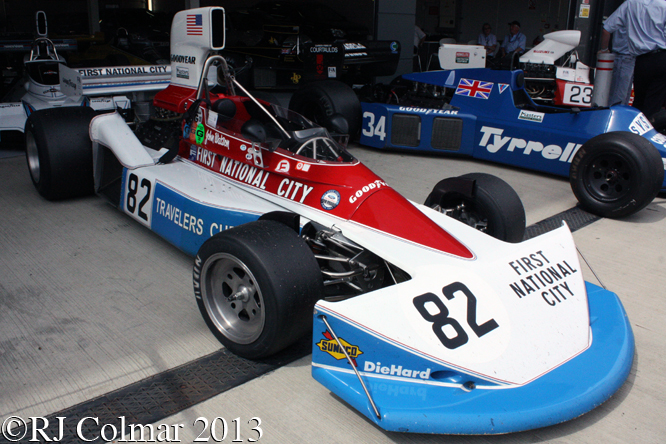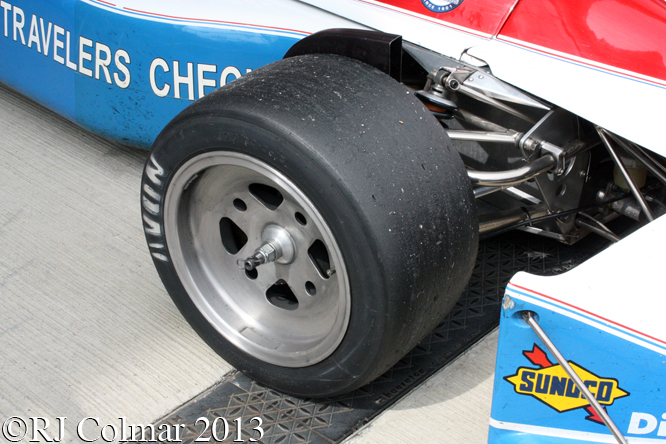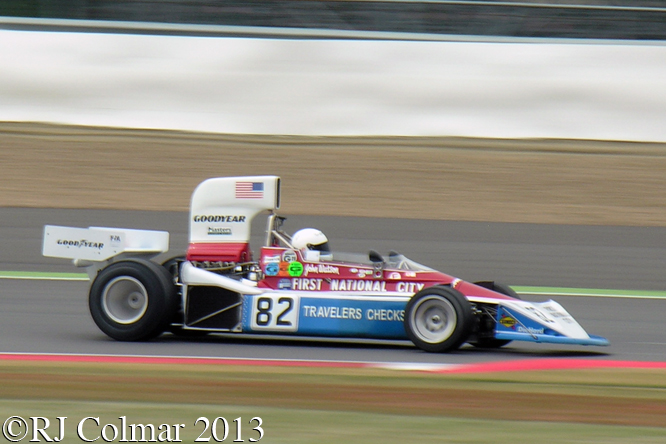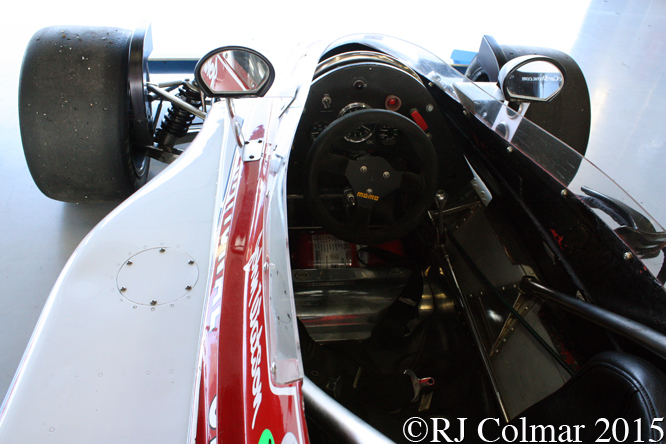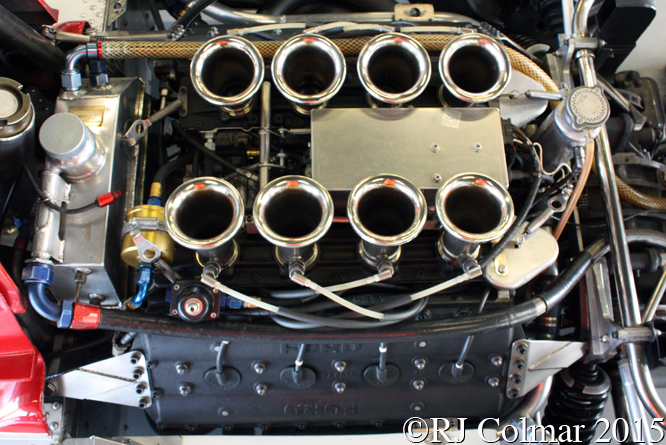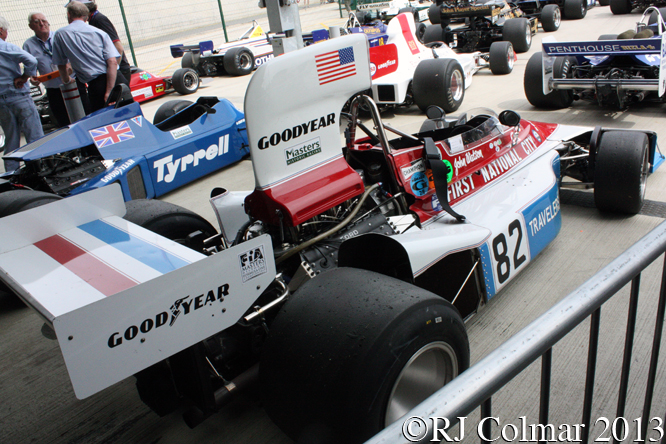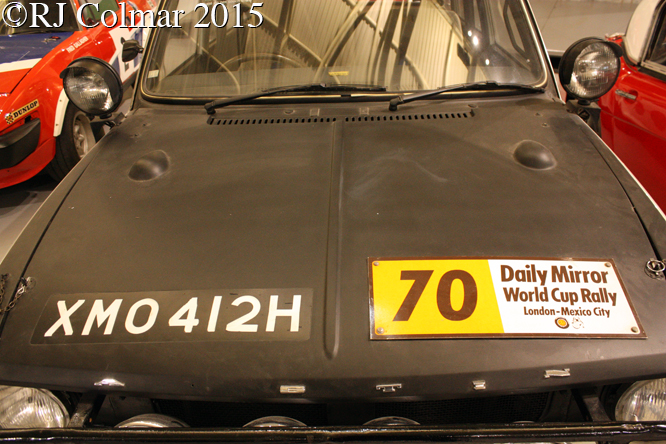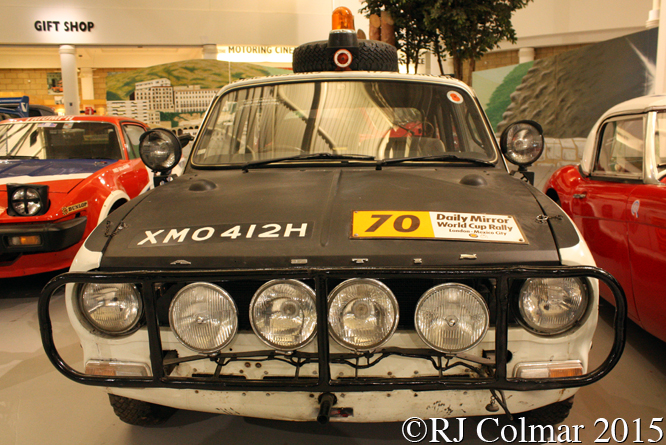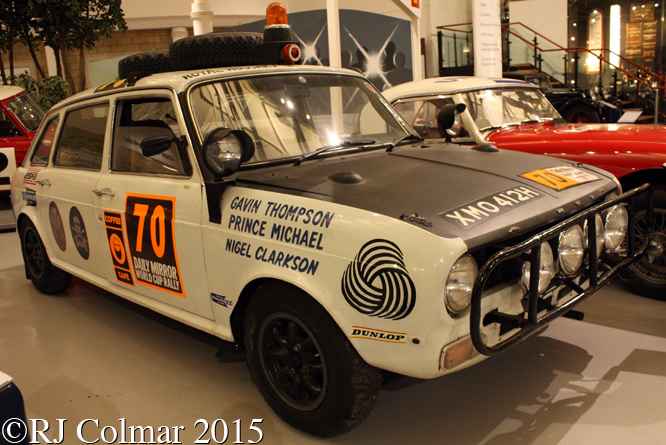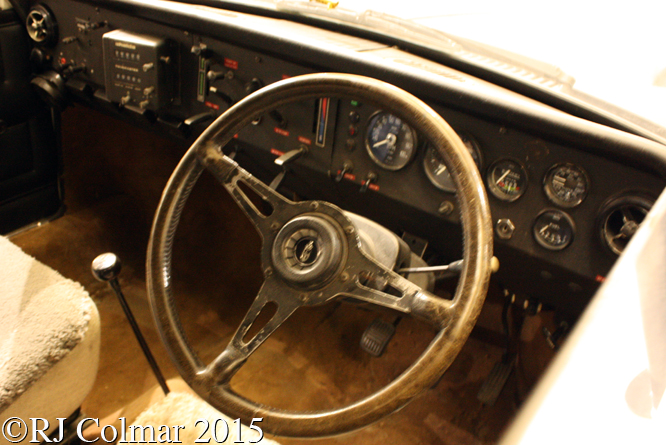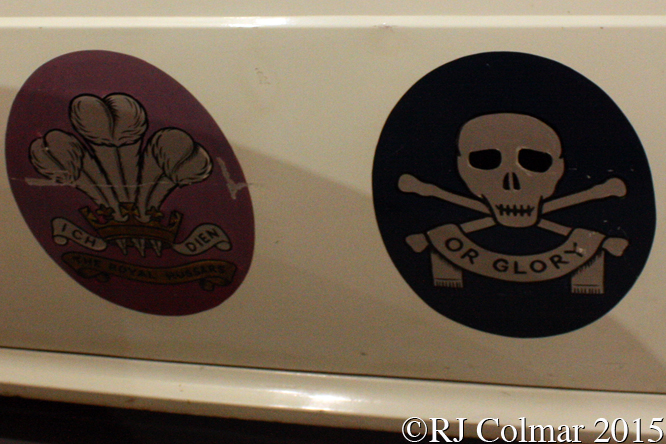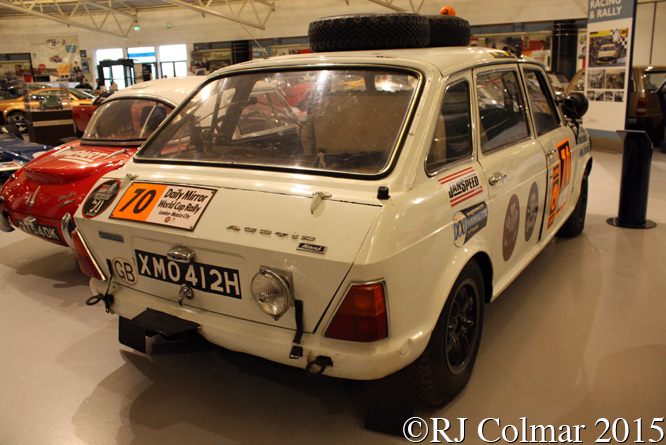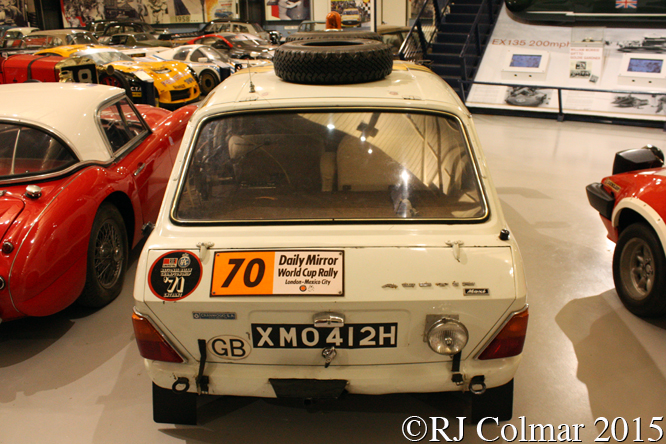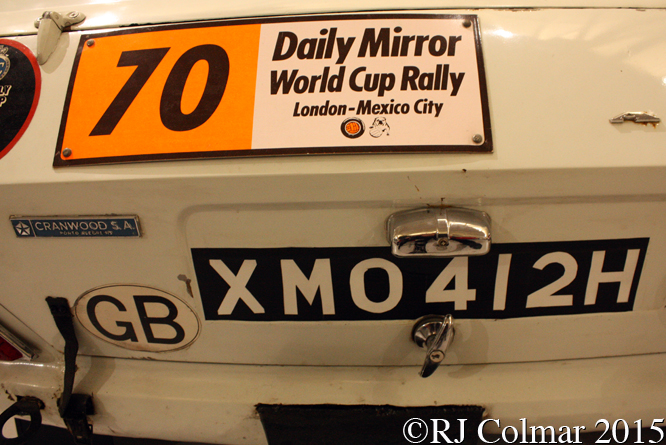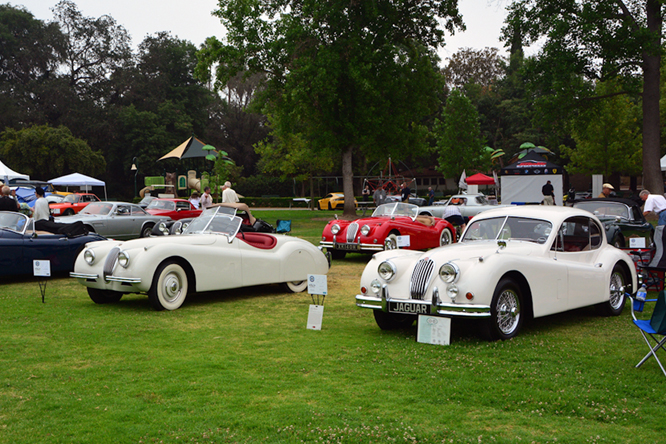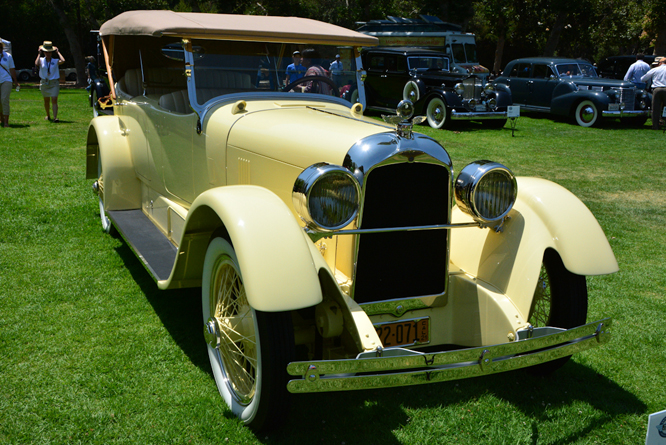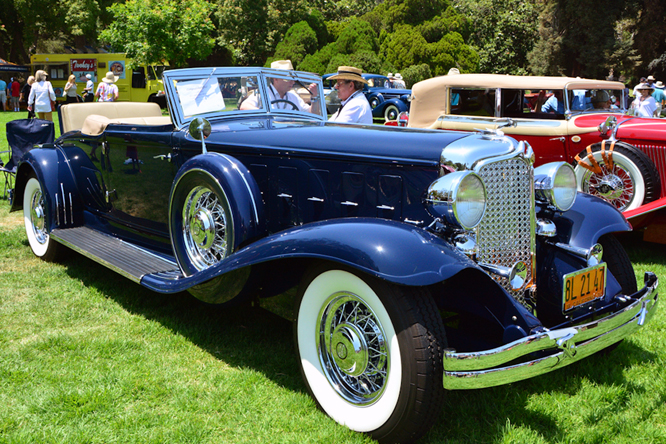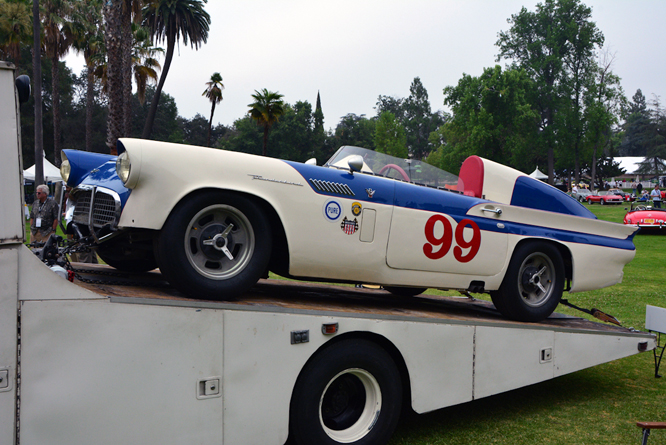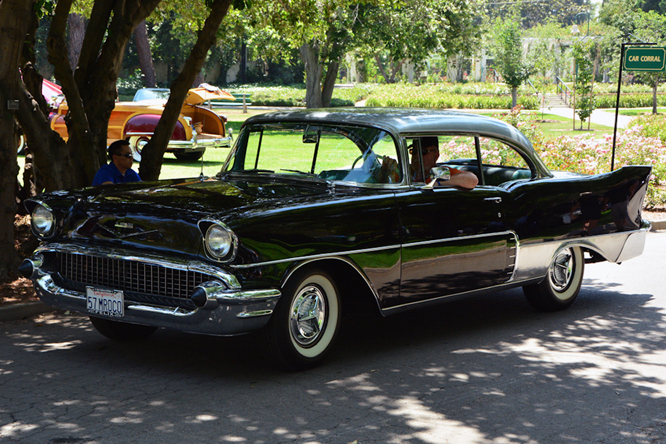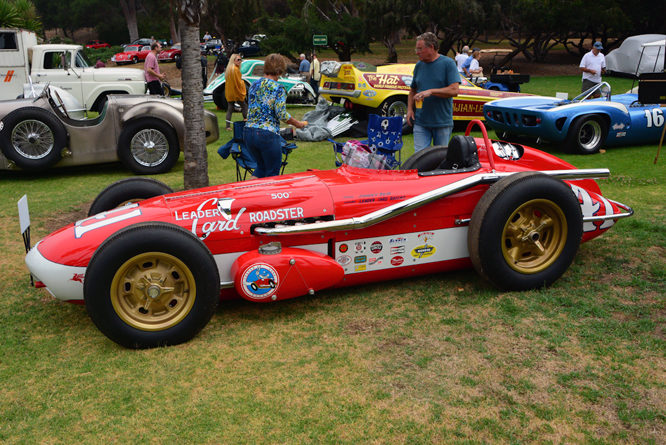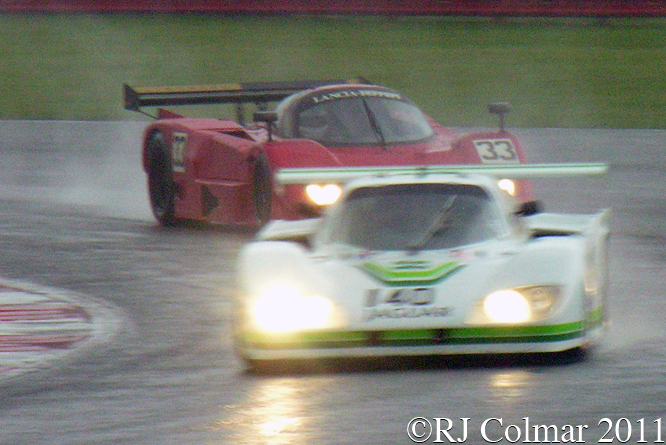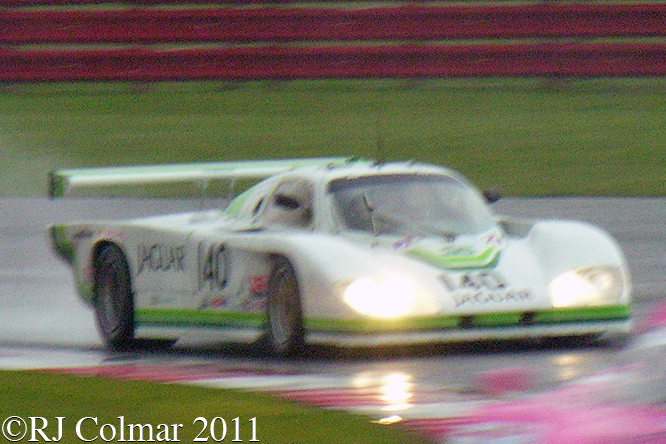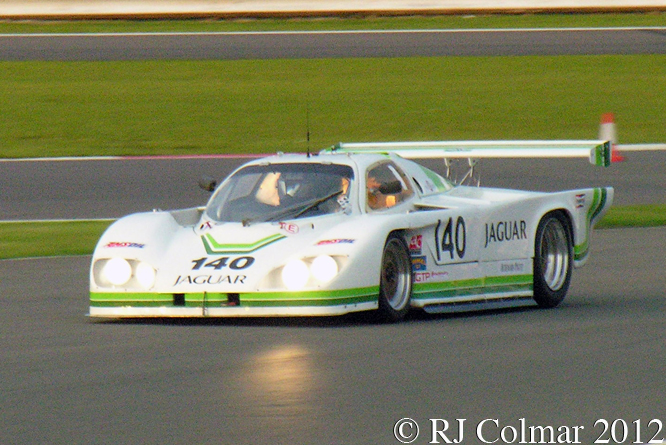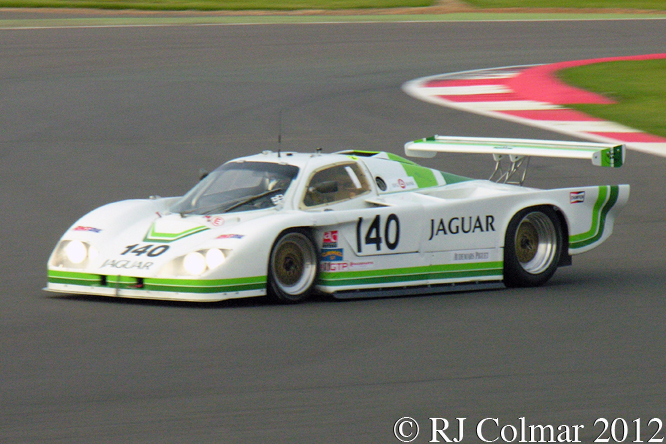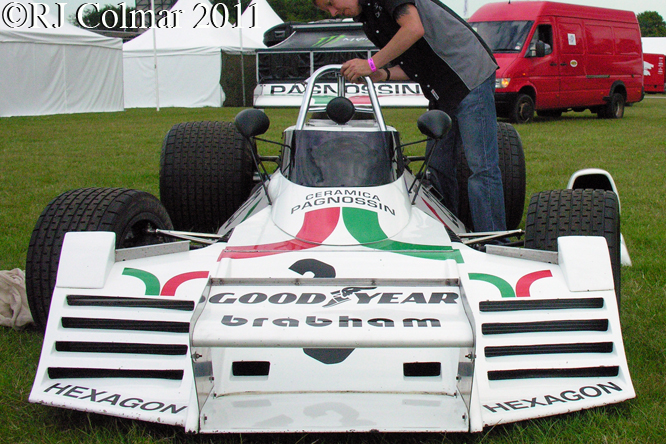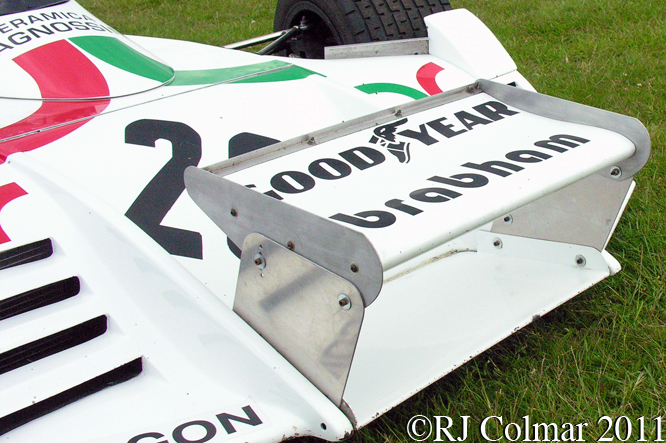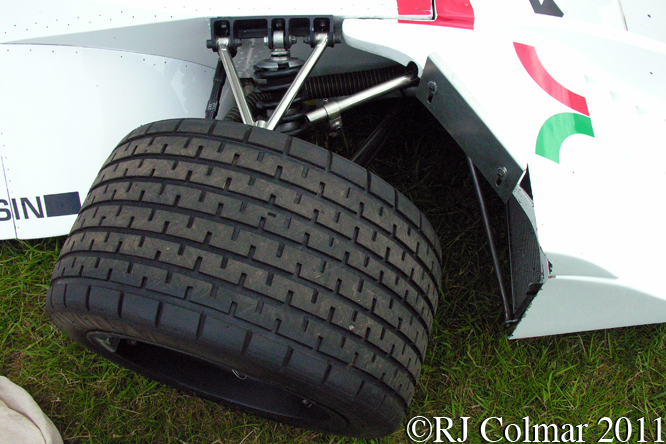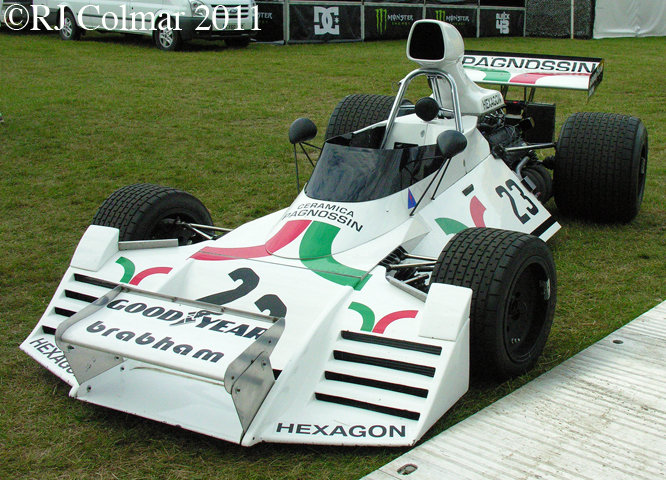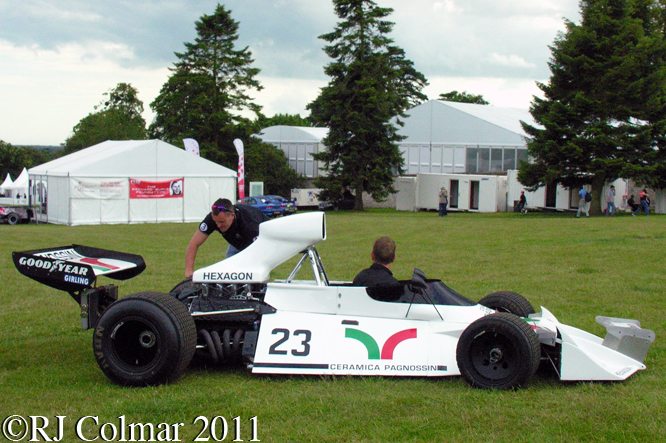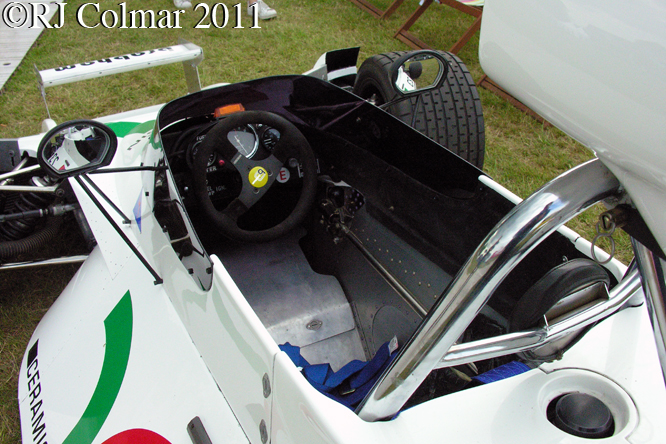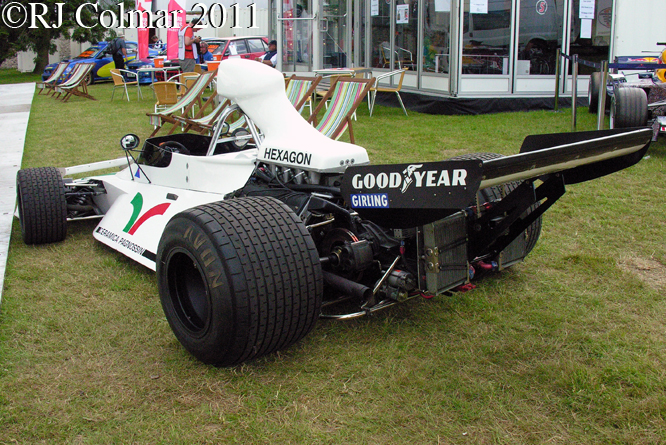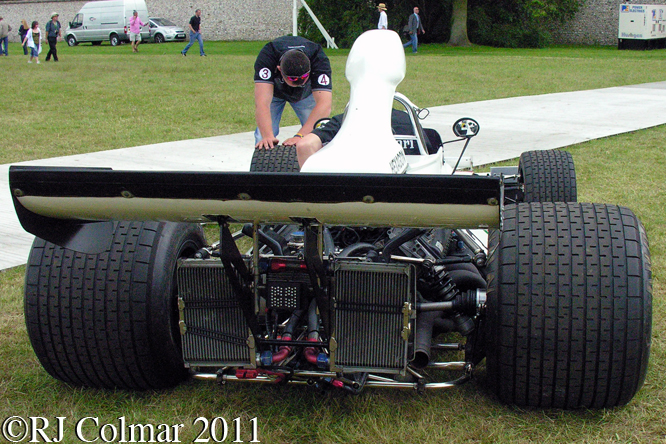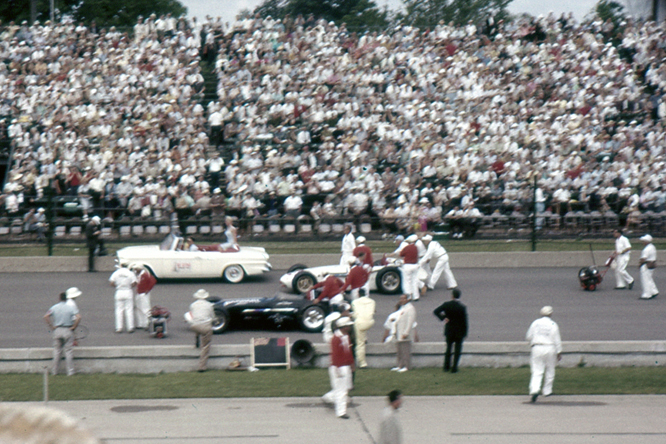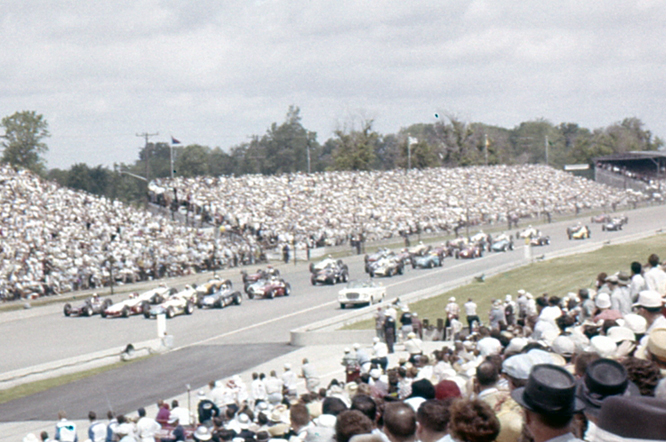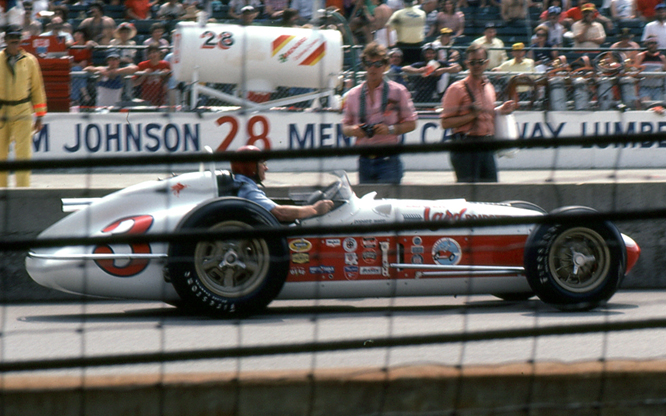“In a Sandown Gold Star race I had the right rear wheel collapse while entering the bridge turn, in a high third gear, throwing me into the catch fencing at a great rate of knots. No doubt the fencing arrested my speed, but not sufficiently to prevent the abrupt stop against the abutment scuttling the poor BT43 and bending my body in a few places.”
Those are Kevin ‘KB’ Bartlett’s words describing the last moments of the unique Brabham BT43’s racing career at Sandown Park, Australia on the 9th of September 1979 as found in the book “F5000 Thunder – The Titans of Road Racing 1970 to 1981” by Ray Bell and Tony Loxley.
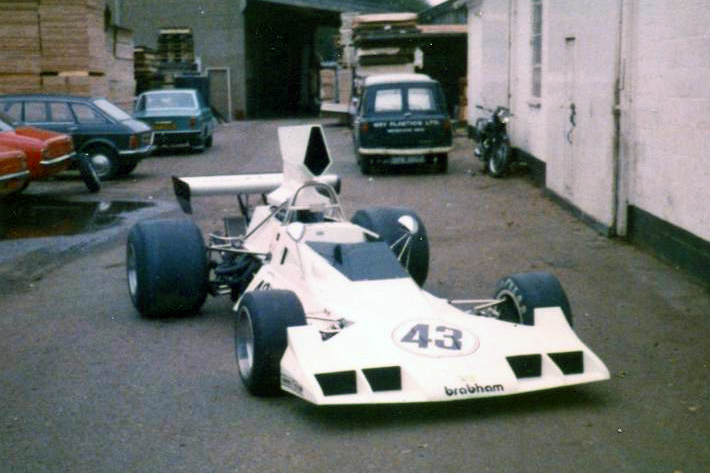
The photo above is of the Chevrolet powered Brabham BT43 Formula 5000 car taken outside the Brabham factory in New Haw near Weybridge, Surrey, UK on the day it was completed by Bob Paton, one of the team who helped build it almost exactly six years earlier.
The car was the brain child of temporary Brabham owner Ron Tauranac before he sold Motor Racing Developments, the trading name of the Brabham Team, on to Bernie Ecclestone in 1972. The job of designing the BT43 was left to Geoff Ferris, best known for designing a successful line of Penske’s that won one Formula One race and dominated the the Indy 500 and CART Indycar championships of the late 1970’s and early 1980’s.

Photo Copyright Allied Artists Picture Corp
The BT43 was based around a Geoff Ferris designed 1973 Formula 2 BT40 chassis , with foam filled triangular deformable sides as first seen on the Gordon Murray designed 1973 BT42 Formula One car, with a sub frame at the back of the monocoque to carry the unstressed 5 litre / 302 cui Chevrolet V8.
The car was first tested by John Watson “on a wet and misty day at Silverstone”, after John had given the car a ‘significant hammering’ it was determined that the nose did not live up to it’s purposeful looks when it came to generating down force.
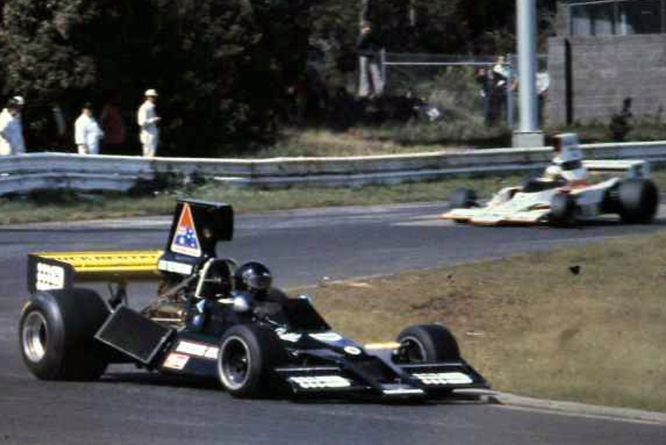
Photo Copyright Greg Falconer use arranged courtesy Ray Bell.
Martin Birrane was the first man to race the BT43 in 1974, but he only recorded two retirements and one failure to qualify (DNQ). Brett Lunger crashed the car at Brands Hatch in his first drive in it a Brands Hatch and Chris Craft followed that up with a 7th place finish at Brands two months later in October 1974.
Brett was back in the car twice at the beginning of 1975 failing to start at Brands and retiring at Silverstone. The cars next appearance was in an obscure 1978 film called The Betsy staring Tommy Lee Jones who’s character Angelo Perino drove the car in a sequence I have yet to see.
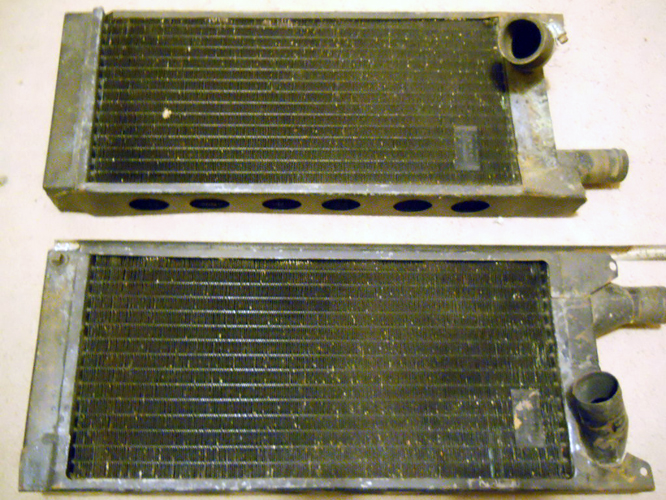
By now the car was owned by Chuck Jones who sent it to Australia for Kevin Bartlett to use in the 1978 season, Kevin finished 3rd in the 1978 Australian Drivers’ Championship with the BT43 finishing a season best 2nd at Oran Park.
Colin Bond took over the driving duties for the four consecutive February meetings of the Australian 1979 season with his only result being a 4th place at Oran Park. Kevin then took a deposit on the car and raced it at the fateful meeting at Sandown Park described in the opening paragraph.
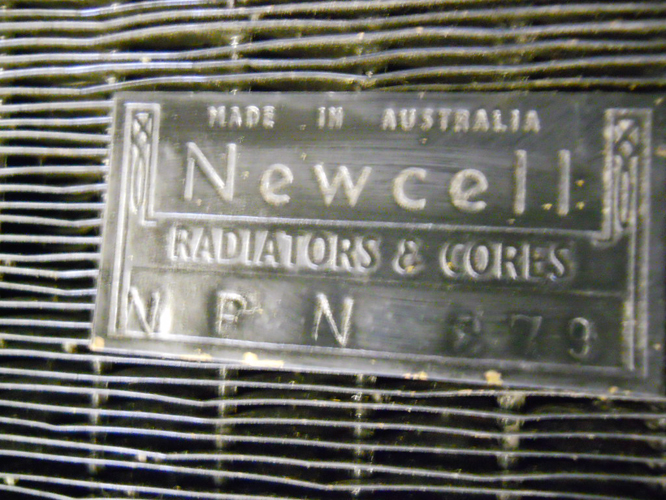
In “F5000 Thunder – The Titans of Road Racing 1970 to 1981” Kevin went on to say “…. those cars carried enough fuel for a 165KM race, the broken tub was like a bomb ready to go off. One “firey” in particular, planted himself above me where the air box had been minutes ago, feet each side of the smoking engine and whilst the crash crew were cutting the car apart to extract me,(he) lent down and said to me “Don’t worry Kev, I’m staying, and if she goes I’ll drag you out no matter what” as he grabbed my fire suit lift tabs. Thanks once again, Derek Reed.”
While Kevin was recuperating the Australian authorities wanted either the duty due on the now wrecked car or for it to exported, the new owner who had only paid the deposit sent it on to a ‘friend’ in the UK before disappearing. The ‘friend’ in the UK refused to pay the shipping cost and until September last year it was believed the unique albeit damaged car had been dumped in the Thames after the storage costs had far exceeded it’s worth.
However in September last year almost 40 years after Bob Paton took the photo at the top of this post the 34 year mystery of the whereabouts of the BT43/1 were conclusively resolved when Sandy400e came forward and revealed that the BT43/1 had not been dumped in the Thames at all on The Nostalgia Forum.
Sandy revealed that he had been working at Overseas Containers Ltd in 1980 when he got wind of a car waiting to be scrapped on their dock. After inspecting the car, essentially a wreck with some bits missing already he bought it for £30.
Not knowing exactly what he was dealing with he disposed of the damaged engine and various bit’s and pieces to friends and enthusiasts over several years and believing chassis tub to be beyond repair and of no intrinsic value sent it to a scrap metal merchant.
After finding the only remaining items, two Australian made Newcell radiators, in his loft one afternoon last September Sandy did a bit of research on the internet and soon realised the wrecked car he had bought for £30 in 1980 was in fact the long lost Brabham BT43.
Kevin Bartlett confirmed that the radiators Sandy had found in his loft were those he had fixed to the back of the monocoque, when he fitted the chisel nose to the front of the BT43 in an effort to generate more front end down force, prior to the cars last race as seen in the third photo above.
Note the Brabham BT43 was never conceived or converted to Formula One specification, there is a myth that it was which appears to have roots in an erroneous article that appeared in Racing Car News in February 1978 on page 44.
My thanks to Bob Paton, Ray Bell, Allied Artists Picture Corp, Sandy400e for the use of their images and text from “F5000 Thunder – The Titans of Road Racing 1970 to 1981” by Ray Bell and Tony Loxley and to every one else who contributed to the “The strange tale of the F5000 Brabham BT43” thread at The Nostalgia Forum.
Next Sunday I’ll be looking at the Lola that can be seen following Kevin in the Brabham in the third photo above.
Thanks for joining me on this ‘Firey Derek Reed’ edition of “Gettin’ a li’l psycho on tyres” I hope you will join me again tomorrow for Maserati Monday. Don’t forget to come back now !
8/12/14 Post script I would like to thank everyone for the overwhelming response to this blog on some social media and I would particularly like to thank Geoff ‘Toughy’ Toughill …
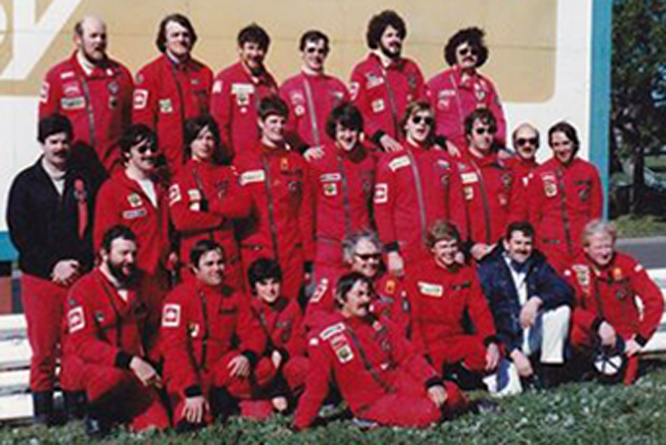
seen above in this photo of the Victoria Fire & Rescue Squad on the far right in the second row for sending me this photo from his dad Keith’s Collection, seen with the moustache at the front. Keith and Geoff worked with the hero of today’s blog …
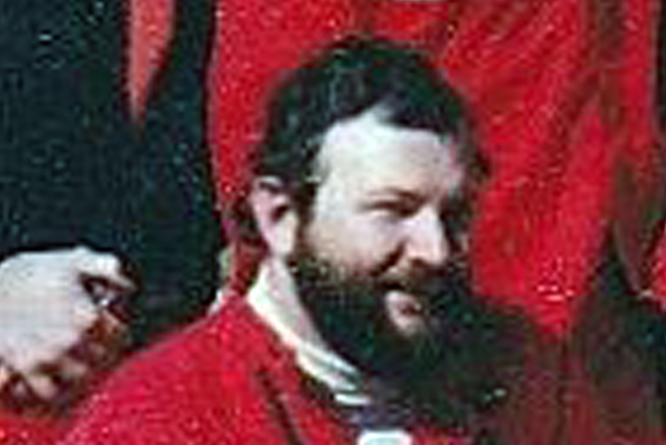
… firey Derek Reed who stood above a very hot motor and the stricken Kevin Bartlett in order to drag Kevin out, in the event that a fire should break out while Kevin was being cut out of the wreckage of the BT43.
Thanks Geoff 
